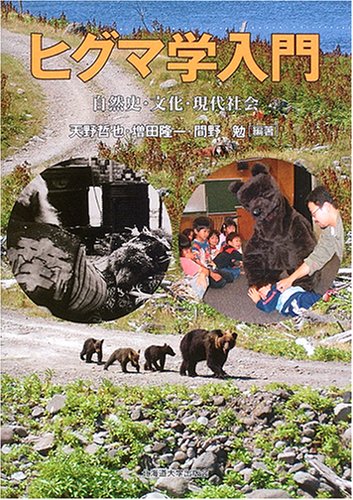1 0 0 0 OA 遺伝子から検証する哺乳類のブラキストン線
- 著者
- 増田 隆一
- 出版者
- 日本哺乳類学会
- 雑誌
- 哺乳類科学 (ISSN:0385437X)
- 巻号頁・発行日
- vol.39, no.2, pp.323-328, 1999 (Released:2008-07-30)
1 0 0 0 分子系統解析による日本在来動物種の起源・進化および渡来時期の解明
北方民族の文化として知られるクマ送り儀礼の起源は、北海道およびサハリン南部を中心としたオホーツク文化期(紀元後6〜12世紀)の遺跡から発掘されるヒグマ遺存体にさかのぼることができる。本研究では、北海道礼文島におけるオホーツク文化期の香深井遺跡から発掘されたヒグマ考古資料(主に頭骨)の産地を同定することを目的として、ミトコンドリアDNAを指標とした古代DNAの分子系統分析を行った。現在、ヒグマは礼文島に自然分布していないので、香深井遺跡のヒグマは礼文島以外の地域から文化の交流とともに持ちこまれたものと思われる。これまでに解読することができた礼文島古代ヒグマの遺伝情報を北海道本島における現生ヒグマ集団のDNAデータと照らし合わせた結果、礼文島古代ヒグマのDNAには北海道の道央-道北型および道南型の2系列が存在することが明らかになった。これは、礼文島古代ヒグマが少なくとも道北地方および道南地域から持ち込まれたことを示している。さらに、形態的データと比較すると、道南型DNAをもつ礼文島古代ヒグマはすべて秋に死亡した1歳未満の仔グマであった。それに対して、道央-道北型の礼文島古代ヒグマの多くは春に死亡した3歳以上の成獣であった。道南型DNAをもつ仔グマはおそらく春グマ猟で捕獲され、当時の道南地方の続縄文人、または、道北地方のオホーツク人によって半年余り飼育されたと考えられる。礼文島古代ヒグマにおける道南型DNAの発見は、仔グマ・ギフトを伴うクマ送り儀礼が、従来強調されてきた集団内だけでなく、異集団間の絆を強める機能をも果たしたことを示唆している。
1 0 0 0 OA パイナップル長期摂取による児童の排便状況および腸内環境への改善効果
- 著者
- 林 美智子 増田 隆昌 石川 大仁 瀧本 陽介 積 志保子 堀田 拓哉 大滝 尋美 荒木 雄介 渡辺 陽介 伊藤 明子 大澤 俊彦
- 出版者
- 一般社団法人 日本臨床栄養協会
- 雑誌
- ニュー・ダイエット・セラピー (ISSN:09107258)
- 巻号頁・発行日
- vol.38, no.1, pp.3-10, 2022 (Released:2022-09-01)
- 参考文献数
- 36
Pineapple, one of the most popular tropical fruits consumed throughout the world, is rich in dietary fiber, which is generally known to improve constipation. In Japan, one out of three elementary school children are reported to suffer from constipation, sometimes resulting in school refusal. To elucidate the health benefits of pineapple intake for Japanese children, a randomized, untreated-controlled, parallel-group clinical trial was conducted. Elementary school children tending to have constipation were given 100 g of pineapples per day for 4 weeks. The questionnaire for physical condition and defecation status, measurement of indoxyl sulfate in urine and analysis of intestinal microbiota were performed before and after the pineapple intake. As a result, defecation status was significantly improved and the proportion of beneficial gut bacteria was significantly increased in the pineapple intake group, indicating that pineapple intake could be helpful in improvement of defecation status and intestinal environment for elementary school children.
1 0 0 0 遺伝子からみたイリオモテヤマネコとツシマヤマネコの渡来と進化起源
- 著者
- 増田 隆一
- 出版者
- 公益社団法人 東京地学協会
- 雑誌
- 地學雜誌 (ISSN:0022135X)
- 巻号頁・発行日
- vol.105, no.3, pp.354-363, 1996-06-25
- 参考文献数
- 29
- 被引用文献数
- 1
The richness of fauna diversity is seen on the Japanese Islands, which range through 3, 000 km. When and from where have theanimals immigrated to Japan? Also, for understanding natural history of the Japanese Islands, it is very importantto investigate evolutinary history and origin of animals distributed on each island. While the evolutionary questions have been paleontologically and geologically examined so far, some of them are still unclear. Recent development of molecular phylogenetic study provides a reliable sight to understanding evolutionary history and origin of species. Advantageously, molecular study can analyze phylogeny of living species without fossil data.<BR>In Japan, two wildcats, the Iriomote cat and the Tsushima cat, live on the Iriomote Island and the Tsushima Island, respectively, where land bridges between the Asian continent and the Japanese Islands were present in the past time. To know evolution of these wildcats gives us useful information for better understanding of natural history of the Japanese Islands. Moreover, because both the wildcats are now endangered, it is now strongly needed to understand phylogenetic status of them for conservation and management. For the reason, we investigated molecular phylongeny of the two wildcats based on mitochondrial DNA sequences, and revealed that both the wildcats are very closely related to the leopard cat <I>Felis bengalensis</I>, which is widespread throughout Asia. Furthermore, from the DNA data, the Iriomote cat and the Tsushima cat were estimated to have diverged from the continental leopard cat approximately 200, 000 and 100, 000 years before present, respectively. The dates estimated by molecular data were in concordance with formation dates of the Ryukyu Arc and the Tsushima Island, respectively. These results suggest that geographic barrier has led fixation of some unique morphological characters into each cat population, while the two Japanese wildcats are still genetically close to the continental leopard cat.
1 0 0 0 OA 1-メチルピロリジンを溶媒とするRh4(CO)12触媒によるCOの水素化反応
- 著者
- 増田 隆志 村田 和久 松田 昭男
- 出版者
- 公益社団法人 日本化学会
- 雑誌
- 日本化学会誌(化学と工業化学) (ISSN:03694577)
- 巻号頁・発行日
- vol.1990, no.3, pp.328-330, 1990-03-10 (Released:2011-05-30)
- 参考文献数
- 7
- 被引用文献数
- 1
The hydrogenation of carbon monoxide has been investigated using Rh4(CO)12 catalyst in 1-methylpyrrolidine (MPD) solvent at temperatures of 210-270°C and syngas pressures of 500-1800 kg/cm2 (H2/CO=1). The Rh4(CO)12-MPD system showed a high catalytic activity for ethylene glycol (EG) formation at a low catalyst concentration. Oxygenated compounds such as methanol (MeOH), methyl formate, ethanol (EtOH), ethylene glycol monoformate, 1-propanol, 1, 2 -propanediol (PD), and glycerol (GL) were formed as the by-p roduct. The selectivity to EG increased as the reaction pressure increased. Increasing reaction pressure increased the selectivity to GL and PD and diminished that to MeOH. Increasing reaction temperature diminished the selectivity to EG and Me0H and increased that to EtOH.
1 0 0 0 IR 外国刑事法文献紹介 ロサーリア・シクレッラ「国際刑事裁判所規程における責任主義」
- 著者
- 増田 隆
- 出版者
- 早稲田大学法学会
- 雑誌
- 早稲田法学 (ISSN:03890546)
- 巻号頁・発行日
- vol.82, no.2, pp.193-200, 2007
- 著者
- 増田 隆一 アブダカディル アブリミット ハリク マハムト 大舘 智志 高橋 学察
- 出版者
- 日本哺乳類学会
- 雑誌
- 哺乳類科学 = Mammalian Science (ISSN:0385437X)
- 巻号頁・発行日
- vol.39, no.2, pp.307-321, 1999-12-30
- 参考文献数
- 17
- 被引用文献数
- 1
1 0 0 0 OA 中国新疆ウイグル自治区に分布する哺乳類の現況と保全
- 著者
- マハムト ハリク 増田 隆一 アブリミット アブダカディル 大泰司 紀之
- 出版者
- 日本哺乳類学会
- 雑誌
- 哺乳類科学 (ISSN:0385437X)
- 巻号頁・発行日
- vol.43, no.1, pp.1-17, 2003 (Released:2008-06-11)
- 参考文献数
- 44
- 被引用文献数
- 1
中国西部のチベット高原から新疆ウイグル自治区(以後,新疆とよぶ)にかけての一帯は,旧北区産哺乳類の進化の舞台であり,現代の哺乳類群集の形成や進化の要因を解明する際の鍵となる地域である.新疆の動物群集は,チベット高原の隆起に伴う古テチス海の退行,中央アジアの乾燥化,氷河期の気候の影響などにより南北および東西の地域に地理的に隔離された.新生代(第三紀後期から特に第四紀初頭)における激しい自然環境の変化により,徐々に現在のような動物小区画の構成および生態地理的分布様式が形成された.多様な自然環境を有す新疆には7目23科136種程の哺乳類が分布している.新疆では,1980年から自然保護区制度が導入され,現在20ヶ所の自然保護区が作られている.従来の哺乳類研究には,牧畜業ならびに病原体に関係のある齧歯類に関して比較的多くの蓄積がある.しかし,近年人為的な活動が哺乳類の生息環境に影響を及ぼし,その生息域の減少と分断化が進行しているため,希少哺乳類の保護が緊急の課題となっている.特に,その起源,系統進化的歴史,形態的·生態的特徴ならびに種内の遺伝的多様性などを明らかにし,その生物学的情報に基づいた保護管理と生息地保全を施策することが必要である.
- 著者
- 村田 浩一 増田 隆一
- 出版者
- 公益社団法人 日本獣医学会
- 雑誌
- The Journal of Veterinary Medical Science (ISSN:09167250)
- 巻号頁・発行日
- vol.58, no.12, pp.1157-1159, 1996
- 被引用文献数
- 11
外生殖器の形態からは性を判別し難いフタユビナマケモノ(Choloepus didactylus)のY染色体上性決定遺伝子(SRY)を合成酵素連鎖反応(PCR)増幅し, 仔の性鑑別をおこなった. 5ヶ月齢の仔および対照とした両親から毛を採取しDNAを抽出した. 仔および父親からSRY断片(216塩基対)がPCR増幅されたが, 母親からは増幅されなかった. ナマケモノのPCR増幅産物(166塩基対)の塩基配列を決定し, すでに報告されている他の哺乳類のSRY遺伝子配列と比較した. ナマケモノのPCR増幅産物にはそれらの遺伝子と高い相同性がみられ(74.1-86.8%), アミノ酸レベルでも同様であった(63.6-85.5%). このことから, ナマケモノのPCR増幅産物はSRY遺伝子の一部であることが推察され, 哺乳類の間で高い保存性をもっていることが分かった. この結果から仔の性別は雄と判定された. ナマケモノの毛を用いたPCR法による性鑑別は動物園での繁殖計画に役立つものである. 知る限りにおいて,貧歯目のSRY遺伝子配列に関する報告は本報が初である.
1 0 0 0 生物学
- 著者
- 高畑雅一 増田隆一 北田一博[著]
- 出版者
- 医学書院
- 巻号頁・発行日
- 2013
- 著者
- 研究代表者 増田隆一
- 出版者
- [北海道大学先端科学技術共同研究センター]
- 巻号頁・発行日
- 2005
1 0 0 0 ヒグマ学入門 : 自然史・文化・現代社会
- 著者
- 天野哲也 増田隆一 間野勉編著
- 出版者
- 北海道大学出版会
- 巻号頁・発行日
- 2006
1 0 0 0 IR 酸化鉄系触媒によるグリセロールからの有用化学物質合成
- 著者
- 多湖 輝興 中坂 佑太 増田 隆夫
- 出版者
- 石油学会
- 雑誌
- Journal of the Japan Petroleum Institute (ISSN:13468804)
- 巻号頁・発行日
- vol.57, no.5, pp.197-207, 2014
- 被引用文献数
- 12
酸化鉄系触媒によるグリセロールからの有用化学物質合成を実施した。反応実験は反応温度623 K,常圧下,固定床流通式反応器にて実施した。グリセロールからの有用化学物質転換反応では,主にアリルアルコール,プロピレン,ケトン類が得られた。これらの有用化学物質は反応経路I(アリルアルコール,プロピレン)と反応経路II(ヒドロキシアセトン,アクロレイン)に従って生成し,経路IIに含まれるヒドロキシアセトンは容易にカルボン酸へと転化し,カルボン酸のケトン化反応によりケトンへと転化された。<i>W/F</i>値(触媒量/供給原料比)を増加させると,アリルアルコールからのプロピレン生成,およびカルボン酸からのケトン生成の各逐次反応が進行し,生成物はプロピレン(収率約24 mol%-Carbon)とケトン類(収率約25 mol%-Carbon)に収束した。また,アルカリ金属を触媒に添加することにより,アリルアルコールの収率が効果的に向上することを見出した。本論文では,試薬グリセリン,および粗製グリセリンからの有用化学物質合成を報告するとともに,触媒組成と反応条件が生成物収率に及ぼす影響を反応機構の観点から議論する。
1 0 0 0 OA 脳内ミクログリアによるシナプス制御機構と慢性疼痛
ミクログリア特異的IRF8欠損マウスでは、社会的認識能が選択的に低下していることが認められた。また、正常では脳内の定位置で細胞突起を動かしているミクログリアが、IRF8欠損マウスでは細胞体ごと脳内を移動していることを見出した。また、時期特異的・ミクログリア特異的IRF8欠損マウスでも、同様の突起形成異常と形態変化が再現されることを見出し、IRF8がミクログリアの形態の維持に関与する転写因子であることを明らかにした。ミクログリアの形態・機能異常が脳の回路形成に影響を及ぼして高次機能の発現に混乱をもたらし、ミクログリアの正常な活動が脳の回路形成や高次機能の維持にも寄与すると考えられた。
1 0 0 0 KPオゾン発生装置の操業安定化について
- 著者
- 増田 隆
- 出版者
- 紙パルプ技術協会
- 雑誌
- 紙パ技協誌 (ISSN:0022815X)
- 巻号頁・発行日
- vol.71, no.10, pp.1159-1163, 2017
<p>KP漂白工程から排出されていたダイオキシン,クロロホルム等の環境問題から塩素,ハイポ漂白をやめ,漂白シーケンスをECF(elementry choline free)へと切り替えてきた。当工場では,D-Ep-Dが主流の中,ZD-Ep-Dを採用した。オゾン漂白導入は,日本製紙初であり,平成12年度1月導入当初,いろんな課題があったものの,現在は安定しておりパルプ品質,コスト及び環境面で重要なものとなっている。</p><p>しかし導入初ということもあり,オゾン発生装置の適切なメンテナンスが確立しておらず,設置13年後(平成25年度)にその能力が約6割まで低下した。今回は,平成26年度9月にオゾン発生プラントの能力回復工事(放電管更新及び開放洗浄,放電管飛び出し対策等)を行い,今後の能力維持のために定期メンテナンス事項を定め,1)供給酸素品質,2)オゾンガス洗浄塔の適正pH,3)各種熱交換性能維持に留意して操業を行っている。</p>
1 0 0 0 タヌキとキツネの多様性科学
- 著者
- 増田 隆一 福江 佑子 谷地森 秀二 浦口 宏二
- 出版者
- The Mammal Society of Japan
- 雑誌
- 哺乳類科学 (ISSN:0385437X)
- 巻号頁・発行日
- vol.49, no.1, pp.137-141, 2009-06-30
- 参考文献数
- 24
1 0 0 0 OA フタユビナマケモノのモを用いたSRY遺伝子のPCR増幅による性鑑別
- 著者
- 村田 浩一 増田 隆一
- 出版者
- 社団法人日本獣医学会
- 雑誌
- The journal of veterinary medical science (ISSN:09167250)
- 巻号頁・発行日
- vol.58, no.12, pp.1157-1159, 1996-12-25
- 被引用文献数
- 3
外生殖器の形態からは性を判別し難いフタユビナマケモノ(Choloepus didactylus)のY染色体上性決定遺伝子(SRY)を合成酵素連鎖反応(PCR)増幅し, 仔の性鑑別をおこなった. 5ヶ月齢の仔および対照とした両親から毛を採取しDNAを抽出した. 仔および父親からSRY断片(216塩基対)がPCR増幅されたが, 母親からは増幅されなかった. ナマケモノのPCR増幅産物(166塩基対)の塩基配列を決定し, すでに報告されている他の哺乳類のSRY遺伝子配列と比較した. ナマケモノのPCR増幅産物にはそれらの遺伝子と高い相同性がみられ(74.1-86.8%), アミノ酸レベルでも同様であった(63.6-85.5%). このことから, ナマケモノのPCR増幅産物はSRY遺伝子の一部であることが推察され, 哺乳類の間で高い保存性をもっていることが分かった. この結果から仔の性別は雄と判定された. ナマケモノの毛を用いたPCR法による性鑑別は動物園での繁殖計画に役立つものである. 知る限りにおいて,貧歯目のSRY遺伝子配列に関する報告は本報が初である.
1 0 0 0 IR 児童兵徴募における児童の敵対行為への積極参加に関する一考察
- 著者
- 増田 隆 MATSUDA Takashi
- 出版者
- 帝京大学法学会
- 雑誌
- 帝京法学 (ISSN:02881659)
- 巻号頁・発行日
- vol.28, no.2, pp.121-129, 2013-03
1 0 0 0 OA イオン交換ゼオライト触媒を用いたアセトンからのイソブテン選択合成
- 著者
- 山崎 聖治 今野 大輝 中坂 佑太 二宮 航 多湖 輝興 増田 隆夫
- 出版者
- 公益社団法人 化学工学会
- 雑誌
- 化学工学会 研究発表講演要旨集 化学工学会第42回秋季大会
- 巻号頁・発行日
- pp.634, 2010 (Released:2011-01-09)




